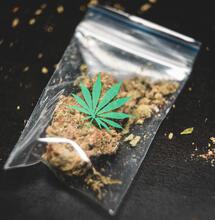Outdoor Growing 2015

Its that time of year when outdoor growers start to think about lashings of free cannabis grown under that great HPS in the sky. Outdoor season is approaching, and thousands of European outdoor growers are starting to get itchy fingers.
Its that time of year when outdoor growers start to think about lashings of free cannabis grown under that great HPS in the sky. Outdoor season is approaching, and thousands of European outdoor growers are starting to get itchy fingers.
Its that time of year when outdoor growers start to think about lashings of free cannabis grown under that great HPS in the sky. Outdoor season is approaching, and thousands of European outdoor growers are starting to get itchy fingers. Some will be seasoned guerrilla growers with many years of experience; these people already know how easy it really is to grow all their annual cannabis requirements under the sun. Some people will be completely new to outdoor cannabis growing; wondering if it really is true that you can grow quality cannabis outdoors even in tough northern European climates. Well, it is true and its much easier than you think.
With each new season there are more and more self-sufficient outdoor growers who find that it really is not that difficult to grow their own outdoor cannabis. Just 10-15 years ago the number of outdoor growers was relatively small. But since then the seed companies have worked hard to selectively breed varieties that are robust enough to deliver several hundred grams of dry buds per plant even in borderline northern European climates. The emergence of autoflowering varieties means you can grow outdoor cannabis in most countries. Today we see lots of growers germinating a few seeds which they plant in the great outdoors, along the riverbanks and in the hills. Why not? Its a good insurance policy in case anything goes wrong with your indoor crop. Good quality outdoor seeds are available for a few pounds each and they cost absolutely nothing to grow outdoors. Whats more, an outdoor plant will often yield several hundred grams when grown in good conditions. The hard part is knowing how to start outdoor cannabis growing and how to maximise your chances of success for the minimum cost and effort.
The most successful outdoor growers work hard to find a safe, protected and sunny location which will allow their plants to reach harvest. In the northern hemisphere outdoor growers often look to varieties which will finish blooming around the start of October. The ideal grow location will get good all-day sunlight, often the grow plot will be difficult to access, perhaps via a crawl-hole. This will protect the plants from unintended discovery by people, dog-walkers and grazing animals e.g. Deer. Slug collars should be placed at the base of the plant, you can buy these in garden centres. Traditional gardeners of fruit, flowers and veg use the copper slug collars to stop their plants being infested with slugs/snails and they are highly recommended for cannabis growers as well. Some wire-mesh (‘chicken wire’) from a garden centre will prevent rabbits eating your plants, and can be secured around the plants with tent pegs. The wire should be tall enough to prevent rabbits from getting near your plants. Plants are often germinated indoors and transplanted outdoors after the last frost. This allows the seedlings to get through the first few vulnerable weeks and become strong enough for the great outdoors.
You can use maps and google to help you find possible locations, but there is no substitute for boots on the ground to find the perfect outdoor grow plot. Once you have found it you can start to improve the soil quality with compost, fertilisers, manure etc. Some people deliberately plant brambles or thorns around their plot to provide extra protection for their grow, and to minimise chances of people/animals finding their plants. Other growers deliberately select an already overgrown area of brambles or bushes to grow inside, this is a great way to deter unexpected human/animal visitors. These types of plots require serious hard work to hack out a central clearing and then to dig/improve the soil. And the work will need to be done discreetly to avoid attracting attention, perhaps in stages or perhaps in the early/late hours to ensure better privacy.
Some outdoor growers prefer an outdoor grow location which is near to their home. This makes the job of transporting your soil, plants, manure, fertilisers etc easier. It also means you have a shorter drive home with the newly harvested crop. Often this drive is the most nervous part of the home grown experience.
Some growers like to use proven traditional photoperiod varieties such as Frisian Dew, Durban Poison or Passion #1 which will often reach 2-3 metres tall and can yield heavily when harvested around the end of September. Other growers prefer the smaller, bushier autoflowering varieties which are often planted in June and harvested in August. Auto flowering varieties are sometimes the only realistic choice for those with very short summers.
One new option for outdoor growers in 2015 is a selectively bred Dutch Passion stealth variety called Frisian Duck. It has unusual leaves, bred specially to look unlike any cannabis plant you have seen before. The leaves have a webbed ‘ducks foot’ appearance to them, even experienced cannabis growers have needed persuading that it is actually cannabis. The beauty of the Frisian Duck variety is that most people would walk straight past it and not realise it is cannabis. It will be popular in urban greenhouses and back gardens as well as the countryside. Its only when the buds start to swell heavily in September that the plant is easily identifiable as cannabis, and by then its nearly time to harvest. Lots of people have a greenhouse and a semi-private back garden which could be used to grow a plant or two, but often the small risk of getting caught is enough to deter people from trying. Frisian Duck tips the balance a little further in favour of the urban grower that is looking to cultivate a couple of plants for their own use.
Outdoor growing is simple. When your plants can put out an unrestricted root system into good quality soil you don’t need to worry too much about regular visits to feed or water them. Cannabis grows naturally in the wild without human attention. Many outdoor growers prefer to minimise the number of plant-visits for security reasons. Once the plot is prepared and the plants are in place little needs to be done. Perhaps you will want to visit a couple of times to watch the plants develop and perhaps add a light top dressing of fertiliser. Watering is only necessary in those rare hot/dry summers, and if your plants are near a river bank then the roots are unlikely to get too dry. The only really difficult time comes near harvest, thats when the outdoor grower likes to visit the plants to try to plan the optimum harvest date. The harvested buds can be chopped down, bagged up, and taken somewhere to be dried. Be warned, drying buds requires a carbon filter to control odour. Trying to dry any buds without odour control back at home is a recipe for unnecessary risk and problems.
Probably the hardest part of outdoor growing is finding the right grow location(s) that will hide your plants yet not require too much work to find and improve. Choose a seed bank you trust and remember that even the best outdoor seeds will only cost a few pounds each, peanuts in comparison to the amount of buds they produce. Outdoor growing really is easy!



